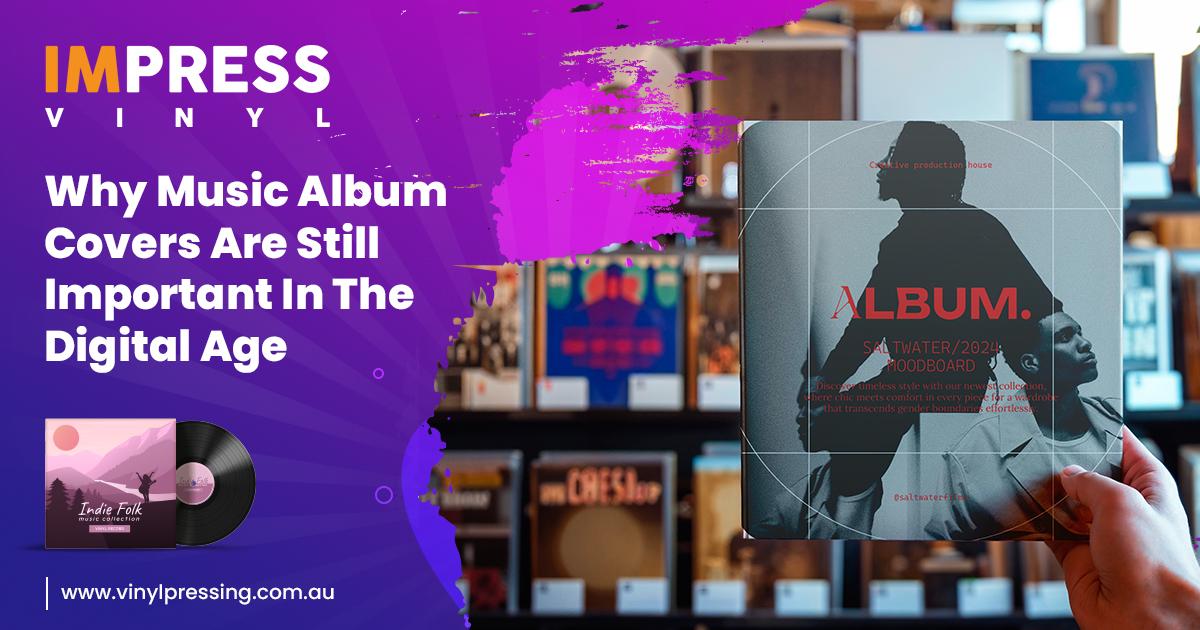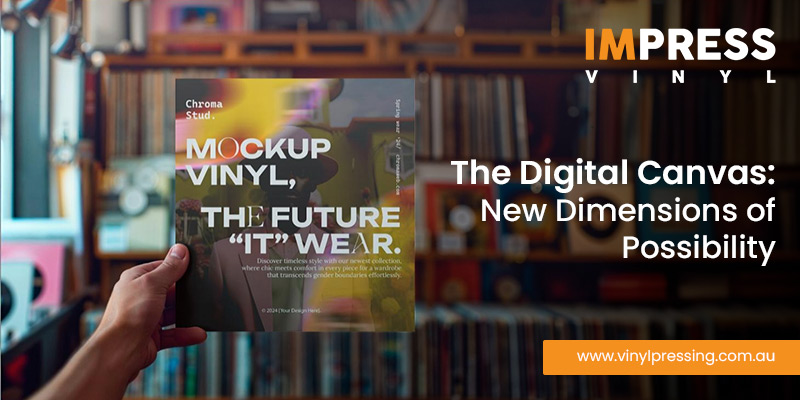Why Music Album Covers Are Still Important In The Digital Age

Have you ever been browsing through a streaming service and only come to rest on an album with an eye-catching cover that drew you in?
In an era where music is listened to more digitally than physically, you may be asking yourself if album cover art still holds importance. I mean, album covers have diminished from 12-inch vinyl record cover blocks sitting on a shelf to small thumbnails on the screens of our phones. But even with this extreme shift in the way we engage with music, album cover art is surprisingly important and influential today.
The digital revolution has changed nearly everything about the music business but fantastic album cover art still fulfills vital purposes that are bigger than format and medium. Not only did not album covers get outdated, they have evolved with the digital era while still playing a role that is both artistic and promotional.
Let’s delve into why album artwork still matters so much in our streaming age:
The First Impression That Lasts
In the oversaturated music world today, artists have seconds, if not fractions of seconds, to grab potential fans’ attention. A great album cover is a visual ambassador for the sound inside it—conveying mood, genre, and artist identity before one note is ever played. Consider Tyler, The Creator’s colorfully iconic album covers or Billie Eilish’s specific visual style. These visuals aren’t merely accoutrements to the sound; they are a vital component of the artist’s image and narrative.
Just as covers of books continue to affect readers in the age of e-books, album covers still direct music world cover discovery. What’s interesting is how this visual-audio relationship operates on a psychological level. Our brains are able to process images much quicker than text or sound, so album art is the ideal way to introduce people to new music.
What album cover has recently caught your eye? Did you listen to that album?
The Digital Canvas: New Dimensions of Possibility

Here’s where it gets really interesting. Instead of diminishing album cover art and music album cover, the digital era has opened it up in some unexpected ways:
Movement and animation:
Digital platforms enable dynamic album covers, making static imagery into kinetic art.
Interactive elements:
Some artists now design album covers with AR features or interactive web elements.
Visual extensions:
Album cover art can easily tie in with music videos, social media graphics, and merchandise.
Think about how The Weeknd’s “After Hours” artwork broke out into a whole visual world across many platforms, or how Childish Gambino’s “3.15.20” employed minimalist white cover design to actively subvert expectations. The digital canvas provides opportunities that vinyl never did.
Wait, though—something counterintuitive is going on. In spite of these new opportunities.
The Vinyl Renaissance: Physical Meets Digital
Just as album artwork appeared likely to stay relegated to postage-stamp-sized screens, vinyl record cover mounted a comeback. Sales of this medium have increased year after year. Because so many music fans yearn for the tactile, immersive experience that digital music cannot provide.
The resurgence of vinyl has provided album covers with a new physical presence in the lives of a lot of music consumers. Designers now create with small thumbnails and big-cover possibilities in mind, frequently creating work that performs differently at different sizes. This double life has encouraged inventiveness instead of constraining it.
What if the conflict between digital ease and bodily experience is not a war in which one side has to emerge victorious, but a symbiotic relationship that enriches both?
Cultural Impact Beyond the Music
Album covers sell not just music—they become cultural reference points. Think about the lasting influence of Pink Floyd’s “Dark Side of the Moon” prism, The Beatles’ “Abbey Road” crossing, or Nirvana’s baby swimming on “Nevermind.” These photos are more than just the records they adorn; they become shorthand images for entire periods, movements, and attitudes.
In today’s social media era, iconic album cover art fulfills another significant purpose: shareability. When listeners put up album cover images on Instagram or as profile images, they’re not simply championing music—they’re integrating it into their digital identity. An effective album cover is a means of self-expression for consumers.
The greatest artists grasp this dynamic. They make covers that fans desire to show off and share—pictures that tell us something about the person who posts them. This social currency continues to be hugely valuable in music promotion.
The Artist’s Statement
For the artists themselves, album cover design is one of the most unmediated visual representations of their creative vision. It’s a statement that puts the music in context and sets the course for listener interpretation.
Kendrick Lamar’s “To Pimp a Butterfly” cover showing Black men standing victorious in front of the White House conveys political messages that are at the heart of the album. Lorde’s stripped-back blue sky for “Solar Power” upon first glance communicates the album’s light, earthy aesthetic departure from her last work.
Did you ever see how the cover of an album affects your own impression of what’s contained within? The images and sounds come together to present a total work of art.
Cutting Through the Noise
In perhaps the greatest shock, album art has come to matter even more—not less—in the era of streaming. Here’s why:
Differentiation:
With more than 60,000 songs being uploaded to Spotify every day, unique artwork makes artists recognizable.
Brand consistency:
Consistent visual identity throughout releases assists in developing artist recognition.
Algorithm guidance:
Catchy covers and vinyl record sleeves boost click-throughs, possibly lifting numbers streamed.
What at first glance seems to be a visual afterthought to the music streaming experience turns out to be a vital marketing asset. The greatest album covers halt thumbs from scrolling and incite that all-important click.
The Future of Album Art
Looking ahead, album covers remain to advance as technology and listening practices progress. Interactive covers, dynamic covers that shift depending on listening patterns, and more incorporation with mixed reality experiences all portend growth opportunity over decline.
The underlying reality is still this: humans are visual beings who create strong connections between images and sounds. As long as that’s the case, album cover art will continue to be important, whether it’s shown on a vinyl jacket, phone screen, or some yet-to-be-conceived format.
What do you consider album covers nowadays? Do you get attracted to music based on how it looks, or is the cover secondary to your musical choices?
At Vinyl Pressing Australia, we believe great music deserves a great presentation. Whether you’re an indie artist or an established band, we help you press your records with premium quality and stunning custom artwork that captures the soul of your sound.
Press Your Vinyl with Us Today — because in the digital age, tangible is unforgettable.